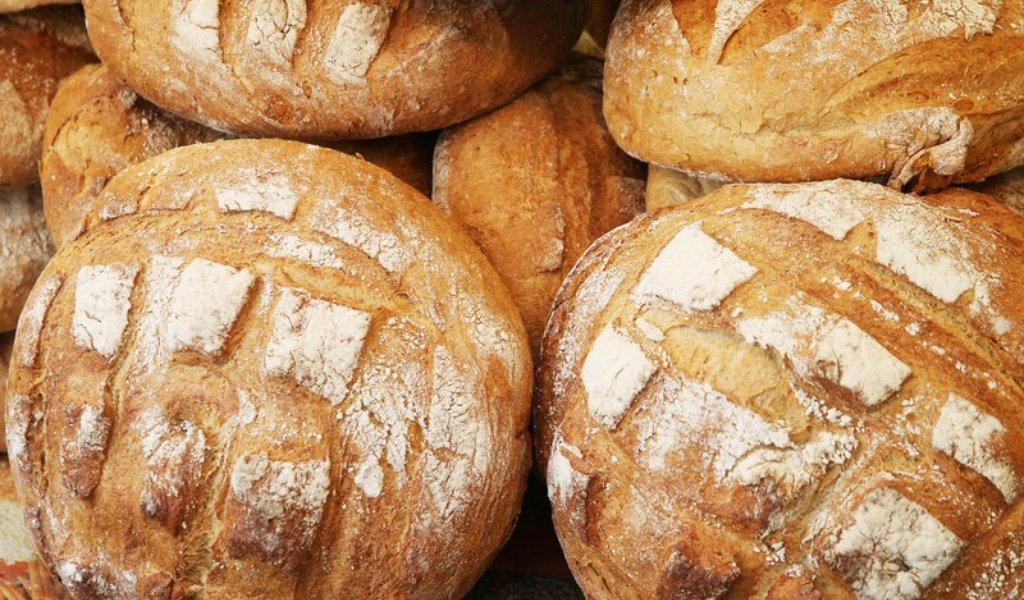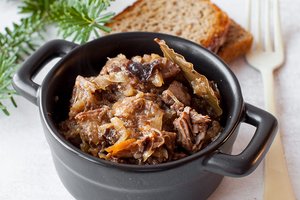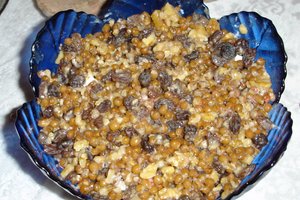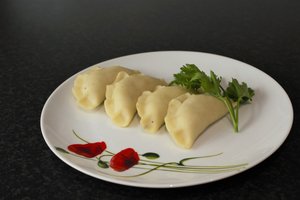Polish bread – eight centuries of taste and tradition
Polish bread is a flagship product of our cuisine. Abroad it is praised for its diversity and unique taste, in Poland it has a special place not only on the table but also in our culture. Among its enthusiasts are artists and politicians, such as Mick Jagger or Henry Kissinger. What is so special about Polish bread?
More than just food
A rich variety of bread types is an important feature of Polish traditional cuisine. Bread has been manufactured since the 13th century and has a special meaning in Polish culture. Respect for bread has religious and patriotic foundations. Thanks to widespread grain crop bread used to be a cornerstone of peasants’ diet, but it was also served on the tables of workers, traders, manufacturers or noblemen. It is a well-known custom to welcome important guests with bread and salt. At Polish weddings, parents greet the newly-weds with bread and salt. Bread was treated as a godsend and until recently it was marked with the sign of the cross before eating. It was forbidden to drop even a single crumb. Polish national poet Cyprian Kamil Norwid wrote in a famous poem:
For that land where a scrap of bread is picked up
From the ground out of reverence
For Heaven's gifts...
I am homesick, Lord!...
C.K. Norwid, My song (II), source of translation: babelmatrix.org
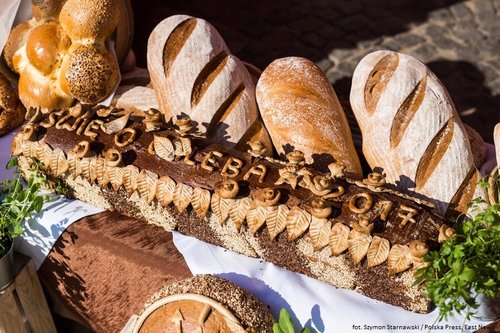 Tradition versus modern lifestyle
Tradition versus modern lifestyle
What is interesting, despite centuries of baking tradition the consumption of bread in Poland systematically falls. According to data from the Polish Bread Institute, in 2015 it was a little more than 45 kilos per person while the following year it was only 42 kilos. A quarter of a century ago this figure was twice as high. In fact, Poland does not even lead in European bread consumption statistics, with Turkey at the top of the list. The downward trend is due most likely to changes in eating habits including a belief that bread makes people fat and should not be part of a balanced diet. It is not entirely true, though. Excessive consumption of wholewheat bread can have negative consequences, but at the same time bread is an important source of fiber, vitamins and minerals. Rye bread has a particularly positive influence on our health.
Foreign successes
Despite a fall in bread consumption on the local market, the Polish baking industry does not have to fear for its future – baking products are a leading Polish food export. In the first half of 2018, 277 tons of bread and pastry were sold abroad (including 38,4 tons outside the EU). Bread is mostly exported as frozen dough and baked in the country of destination. There is also some good news for fresh Polish bread lovers. Polish bread is manufactured abroad, not only for the many Poles living out of Poland but also to conquer foreign tables. Polish bakeries are opening across Europe and beyond, mostly in countries with a strong Polish community, such as the UK or the Netherlands. The owner of several dozen bakeries in Canada exports his products to the US. In 2002, the Ciszkowski brothers from Ciechanowiec opened a bakery in Brussels, not because they lived there, but to use it as a springboard for expansion at home and abroad. Their idea turned out to be successful – it is said to be the first time after World War 2 when residents of Brussels were queuing for bread. The Polish baking industry was also noticed in 2010, when Polish baker Andrzej Szydłowski was awarded the “World Baker of the Year” title by the International Union of Bakers and Confectioners.
Bake Polish bread at home
In Poland it is more and more popular to bake your own bread at home. Here is a simple recipe for a loaf made of wholewheat flour milled just once and not sifted.
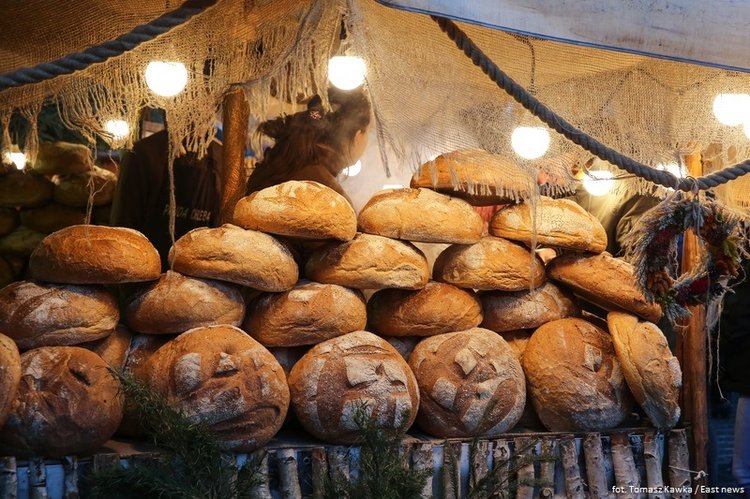
INGREDIENTS
300 g (2 cups) flour
100 g (2/3 cup) wholewheat flour
1 ½ tablespoons salt
20 g fresh yeast (or 1 tablespoon dried yeast)
300 ml cool water
Wholewheat flour or bran to sprinkle the bread
METHOD
Sift the flour to a big bowl, add the bran left on a strainer, salt, crushed yeast and mix it all with a spoon. Pour water and mix the ingredients with a spoon for about half a minute. Cover the bowl with a plate or tin foil and leave it for 14 hours in indoor temperature, for example on the kitchen table.
Dust a pastry board (or a table) with flour and take out the dough. Fold it three or four times in half (it will be too watery to form a ball).
Put a clean tea towel on the kitchen table, sprinkle it with rye flour and put your dough on it (folded part down). Cover the dough with edges of the towel and leave it in a warm place for 1-2 hours until it doubles its volume.
Preheat the oven to 240-250 degrees Celsius and put the grill at 1/3 height. Place an empty heatproof (e.g. cast-iron) pot on it to warm.
Very carefully, using oven gloves, take out the pot and remove the lid. Put the dough inside the pot (slide it down from the tea towel or move it quickly with hands sprinkled with flour). Cover the pot and bake for 30 minutes. Take off the lid and continue baking until bread gets golden brown, usually after 15 minutes and another 5 minutes with tin foil on top.
Take the pot out of the oven and leave it to cool. Slice the bread after cooling. When it gets stale, you can use it to make delicious toasts.
Source: kwestiasmaku.pl
Poland.pl
23.10.2018


